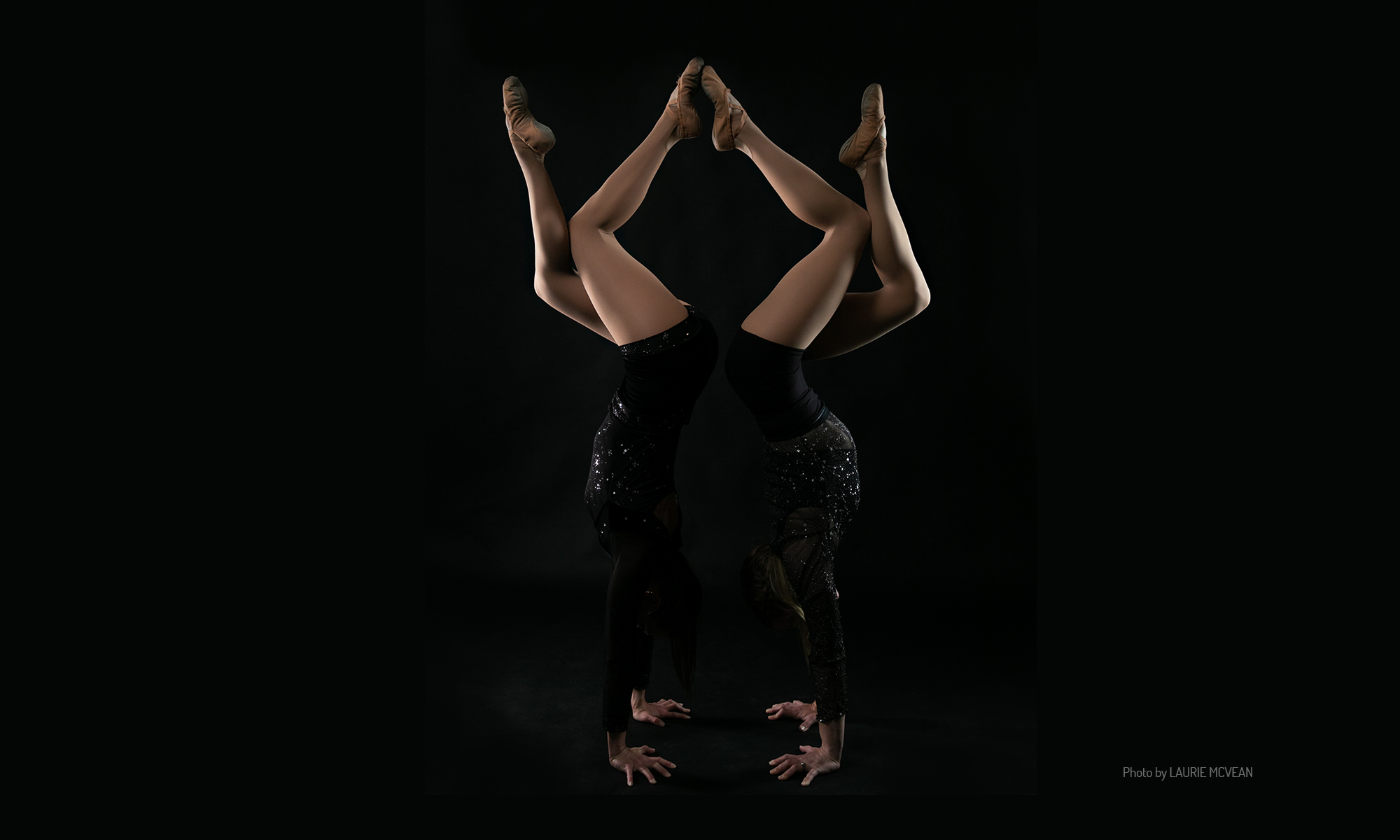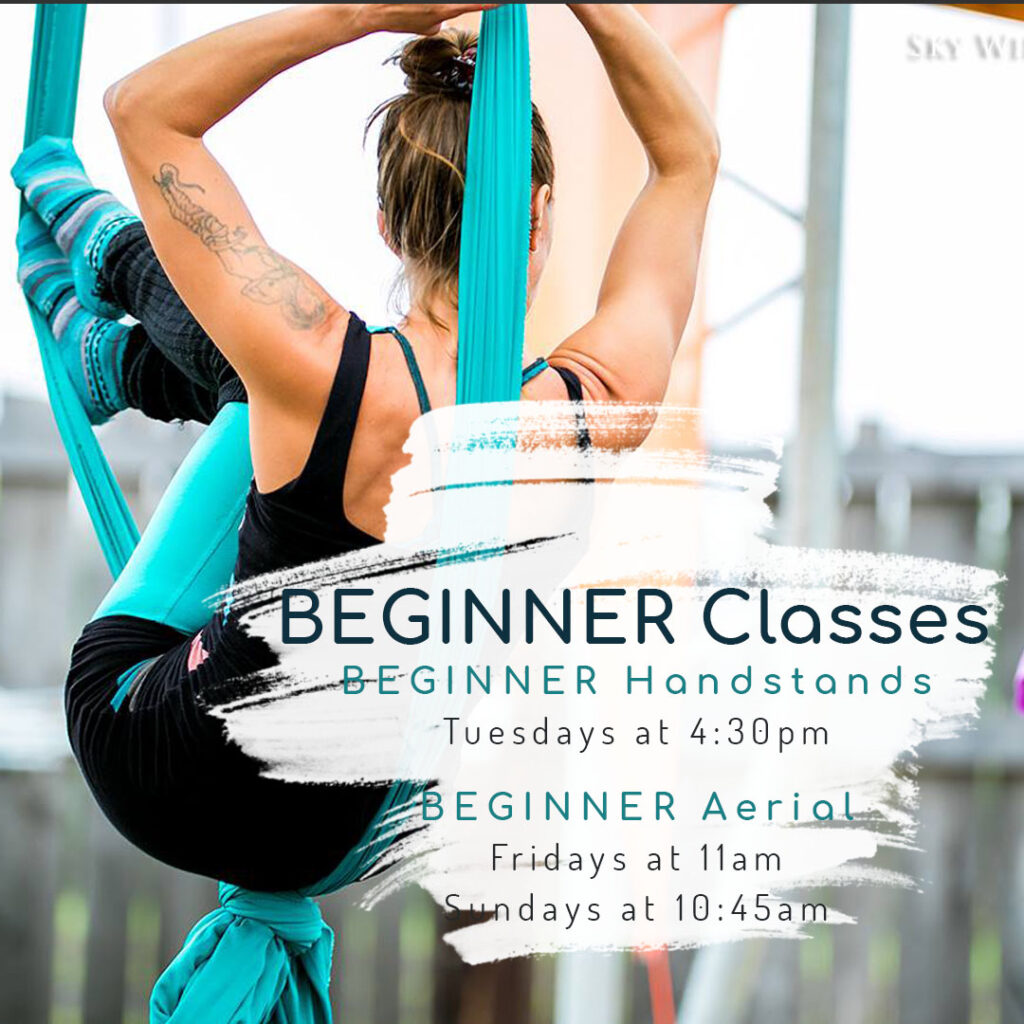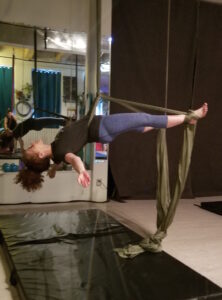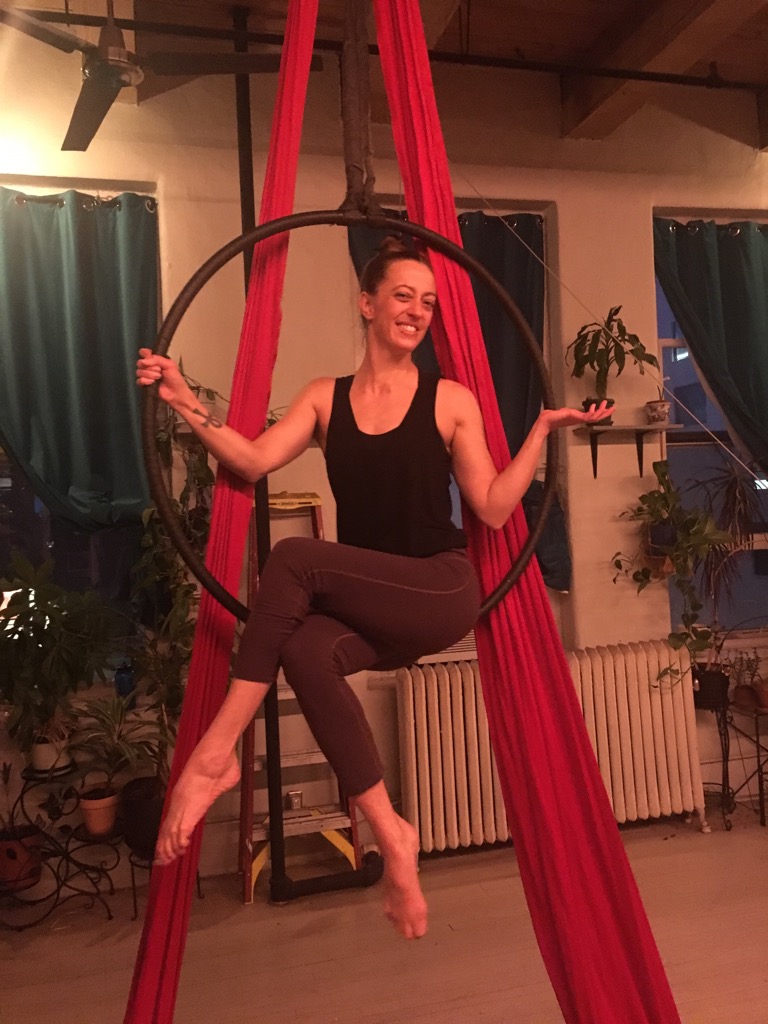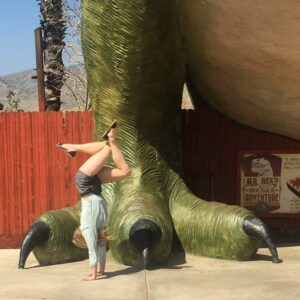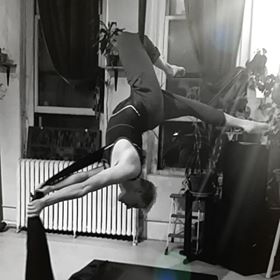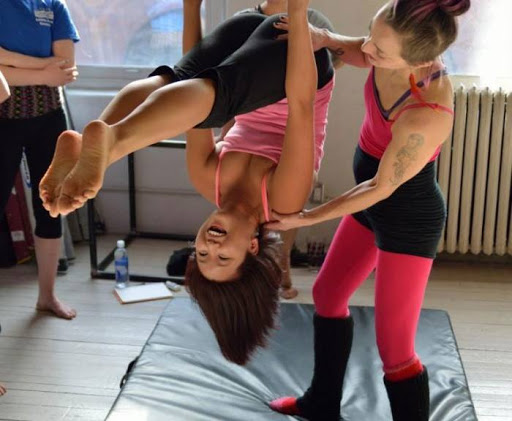You’re probably aware that aerial arts involves acrobatic dancers and athletes performing stunning and awe-inspiring feats high above ground.
But as a student, you may be wondering – what exactly counts as an aerial art form, and what are the different ways to learn them?
There are a wide variety of aerial apparatuses which have a variety of names – aerial fabric (also called tissu or silks), aerial hoop (lyra), trapeze, hammock (sling), and rope (corde lisse) are some of the most commonly taught apparatus at any circus studio, though you may certainly see others offered.
At Stomping Ground Studio, we offer classes in two very different aerial apparatuses – aerial tissu (or silks) and lyra (aerial hoop).
If you know you’d like to try out an aerial class but are debating exactly how to get started, we’ve got some advice.
Below, we’ve collected some of the key features of training in both tissu and lyra so that you can decide which is a better fit for you.
Lyra
First off, let’s start with a brief definition.
Lyra – or aerial hoop – is a metal ring (most frequently made of steel). They might be wrapped in a soft tape or left bare, with metal exposed. They also come in a wide variety of sizes, perhaps barely big enough for your body to fit through or large enough to comfortably accommodate multiple performer’s limbs and torsos. Lyras are most commonly rigged as either single or double point, meaning that the hoop’s central overhead anchor is either from one spot or two.
What people like
Making bendy shapes with your body. Lyra is a great apparatus for showcasing flexibility. The sturdy metal structure offers something solid to hold onto while its circular shape allows limbs to press or extend at a distance from each other.
A chance to rest. Because there is a “bottom bar” – the part of the hoop that is closest to the ground – you can always come to a seat in the lyra to take a little breather in between poses. This sets lyra (and trapeze) apart from many other apparatuses that simply hang in one vertical line.
Ability to partner up. Lyra is one of the most common aerial apparatuses that you’ll see used in duo performances. Specially sized lyras made for two people are widely available, and partner lyra technique is taught in many studios.
A quicker learning curve. It’s possible to learn a wide repertoire of lyra skills in just a few classes. This might make lyra a good fit for you if you are interested in learning Instagrammable poses or creating choreography for a performance right away.
Spinning! For some of us, spinning is downright fun! Plus, it can also make for a great featured element in a performance. Though you can spin on a vertical apparatus, the job is much easier on a lyra simply because there is less material weighing you down towards the floor.
What people don’t like
Metal is hard. Though the firm metal of the hoop does help to give you a solid grip, it also takes a little time to build up the right callouses. And you will need those callouses. Lyra can be tough on your hands, knees, elbow pits or any other body part that presses into the hoop. Be prepared for some weird bruises!
More static, less dynamic. We firmly believe that any apparatus can be used dynamically. However, when you’re just starting out, the way your body will be moving on a lyra will be different than on a vertical apparatus. If you love the feeling of moving through space and swinging your limbs around you, you might prefer the dynamic movements that are well suited to vertical apparatuses.
A quicker learning curve. While learning a lot quickly may be a perk for some, it can also lead to boredom for others. Most of the new shapes and techniques you will learn on a lyra will come up front, and be expanded and perfected over time.
How to progress
Train your flexibility. We recommend a combination of active flexibility (lifting or lengthening areas of the body with your own strength) and passive (sitting in a stretch for an extended period of time). With greater bendiness, you’ll be able to take lyra shapes to their fullest potential.
Spinning tolerance. Spinning does not come naturally to everyone. If it makes you feel a little queasy or uneasy, take it slow and try to build your tolerance over time. Learning the dance technique of “spotting” or training yourself to focus on a fixed point on your body can help.
Strengthen your hands. Holding onto a metal circle for minutes at a time can get exhausting. Work on improving your ability to grip by holding weights (or even full grocery bags) and stretching your fingers and wrists often.
Try different types of lyras. There’s a lot of variety, so be sure to expand your horizons, if you’re able. You may find that you only like taped lyra and don’t like gripping bare metal, or vice versa. You may prefer a single-point to a double-point. But you’ll only know if you try!
Tissu
What people like:
An athletic experience. Because you cannot take resting poses as easily as on a lyra, many people find tissu a more challenging athletic experience. If you enjoy cardio or endurance sports, this may be a good fit for you.
Dynamic movement. A vertical apparatus, like tissu, has a movement all its own. Fabric can move – or be moved – in any plane, in any direction, fast or slow, like a whip or like taffy. Students that enjoy moving with their whole bodies in a variety of movements seem to appreciate this about tissu.
Solving puzzles. In order to perform many moves on aerial tissu, your body has to move one way, at one time, towards a place, and arrive in a certain way. Learning fabric can be sort of like a logic puzzle for your body. For many students, the best part of a tissu class is trying to figure out all the different pieces of a new move – or, eventually, creating their own wraps and positions.
What people don’t like:
A steep learning curve. Tissu can be a particularly intimidating apparatus to learn. It’s vertical (no rest breaks), requires endurance (which you may or may not have lots off), and it’s slippery (requires good grip strength. While there are several fundamental moves and shapes on tissu, learning just the basics can take several classes, weeks, or months. You may not always leave your first classes feeling like the champ you are.
Considerable upper body strength. To do pretty much anything on fabric, you’ve got to have a strong upper body. Your core must stabilize you, and your arms, back, chest, and shoulders have to work to pull your entire body weight against gravity. It will certainly be built over time as you continue your training. Students rarely come to their first class able to complete a full pull-up, so don’t sweat it!
Going upside down. Some people love it. And some definitely don’t. Unlike on lyra, where there are many shapes you can make while keeping your head pointing up (or at least sideways), one of the fundamental skills of tissu is gaining comfort with inverting, when your head is the lowest part of your body. If even the thought of this sends you into a panic, you should expect to take things one tiny step at a time.
How to progress
Increase your upper body strength. One of the best possible things you can do to improve your skills on vertical apparatus is to get better at pull-ups. Hang from a pull up bar. Hold yourself at the bar with bent arms and with straight arms (shoulders engaged). Hold yourself and slowly lower down. Repeat until you can pull yourself up. Then repeat, repeat, repeat…
Challenge your comfort with going upside down. If inverting makes you nervous, start to play with going upside-down in slow, safe ways. Have a friend spot you in a handstand or headstand or do them against an empty wall. Try out a slow-paced aerial yoga class, and allow the aerial sling to give you all the support you need to tip back.
Everything on both sides! When you approach tissu, it’s often to one side of your body. Your teacher may have you climb, tie in your foot, or hook a knee on one side. Do it on the other side too. For the folks in the back – DO IT ON THE OTHER SIDE TOO. You may see many advanced aerialist who can perform a beautiful skill on their right but UGH what’s that on the left? You may be a beginner, but you don’t have to be lazy! Do both sides.
Pay attention to theory. As you are learning wraps, pay attention to not just how to get to them but also how they work. What is keeping you locked in? What doesn’t work? The more you pay attention to the puzzles behind the moves, the more you’ll be able to experiment and pick up new skills as you progress.
When in doubt… Do both!
While many people may find they have a preference between one apparatus or another, the beginning of your aerial education is the perfect time to try several.
At Stomping Ground Studio, you can take a class in tissu or in lyra OR try a mixed apparatus class where time will be split between the two apparatuses.
Whichever you choose, we recommend a minimum of three classes within three weeks to get the best feel for the apparatus that works best for you.
Stay tuned for more tips on getting the most out of your first aerial class!

